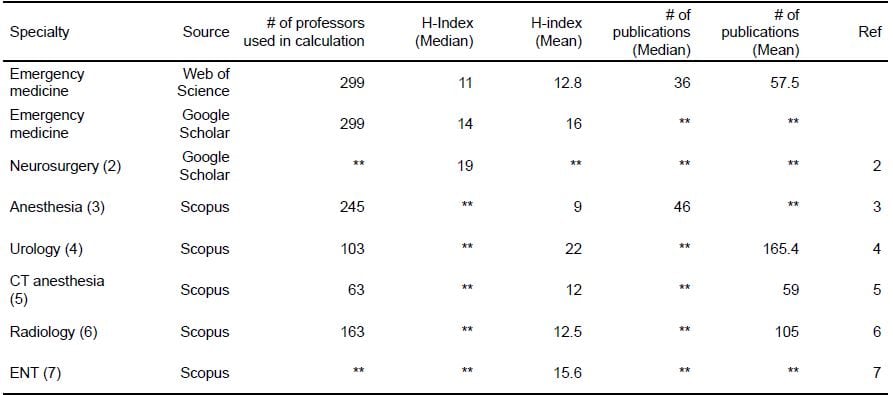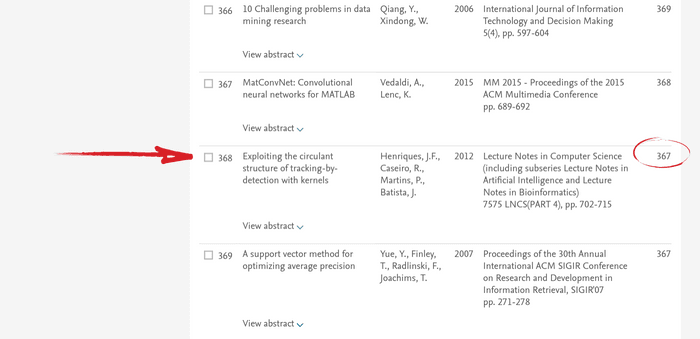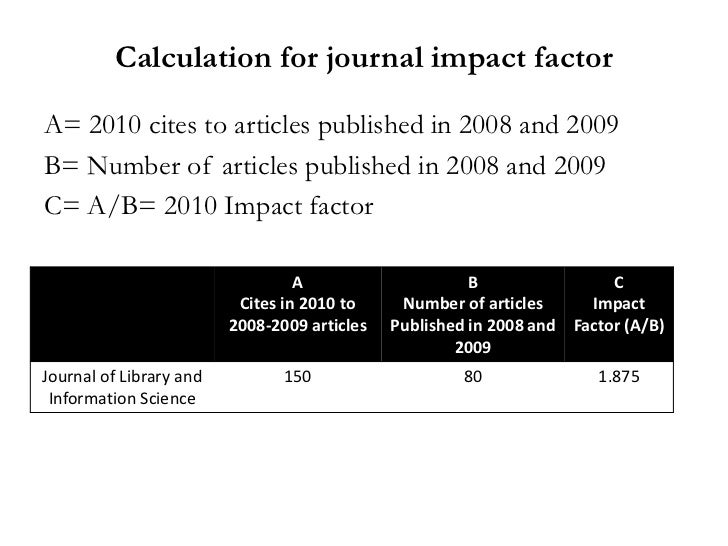Citation index calculation information
Home » Trend » Citation index calculation informationYour Citation index calculation images are ready in this website. Citation index calculation are a topic that is being searched for and liked by netizens today. You can Get the Citation index calculation files here. Find and Download all royalty-free photos and vectors.
If you’re looking for citation index calculation pictures information connected with to the citation index calculation keyword, you have come to the ideal blog. Our site always gives you hints for refferencing the maximum quality video and image content, please kindly search and find more informative video articles and graphics that match your interests.
Citation Index Calculation. It combines an assessment of both quantity (number of publications) and quality (references to those publications) by counting a researcher’s most cited works, and the number of citations those works have received in other publications. This very simple measure is only used by google scholar, and is another way to help gauge the productivity of a scholar. In the below example, an author has 8 papers that have been cited 33, 30, 20, 15, 7, 6, 5 and 4 times. You can search or browse the index and select the right names.
 (PDF) Retention Index Calculator From researchgate.net
(PDF) Retention Index Calculator From researchgate.net
A fwci of more than 1 indicates higher than expected citations based on the global average for similar publications. Snip (source normalized impact per paper) calculation. It is based on weighting the number of citations a paper receives to a comparison group within the same field. Select author and choose select from index. An output with an fwci value of 1 can be interpreted as having `world average impact’. You can check your google citations on the following way.
Citation potential in its subject area
The guidelines followed by inflibnet for fetching institutional data from. The relative citation ratio (rcr) is a new metric, recently endorsed by the national institutes of health. The impact factor is calculated by dividing the number of citations in the present year, by the number of publications (yours) in the two preceding years.you can include or. The index is based on the set of the researcher�s most cited papers and the number of citations that they have received in other people�s publications a scientist has index h if h of [his/her] np papers have at least h citations each, and the other (np − h) papers have at most h citations each. An output with an fwci value of 1 can be interpreted as having `world average impact’. It combines an assessment of both quantity (number of publications) and quality (references to those publications) by counting a researcher’s most cited works, and the number of citations those works have received in other publications.
 Source: researchgate.net
Source: researchgate.net
Or browse the author index: Snip (source normalized impact per paper) calculation. In the below example, an author has 8 papers that have been cited 33, 30, 20, 15, 7, 6, 5 and 4 times. The guidelines followed by inflibnet for fetching institutional data from. Click on the link create citation report.
 Source: guides.lib.wayne.edu
Source: guides.lib.wayne.edu
The relative citation ratio (rcr) is a new metric, recently endorsed by the national institutes of health. The author name(s) you select will appear in the search box. But both databases are limited to peerreviewed journals only. An impact factor of 2 means that, on average, the articles published one or two years ago have been cited two times. Snip (source normalized impact per paper) calculation.
 Source: en.ppt-online.org
Source: en.ppt-online.org
This very simple measure is only used by google scholar, and is another way to help gauge the productivity of a scholar. Created by google scholar and used in google�s my citations feature. Mean citations per paper = 107.5746. The impact factor is calculated by dividing the number of citations in the present year, by the number of publications (yours) in the two preceding years.you can include or. You can search or browse the index and select the right names.
 Source: tangs-boy.blogspot.com
Source: tangs-boy.blogspot.com
Or browse the author index: Click on search and a list of your publications appears. An output with an fwci value of 1 can be interpreted as having `world average impact’. You can search or browse the index and select the right names. Click on the link create citation report.
 Source: researchgate.net
Source: researchgate.net
Select author and choose select from index. A fwci of more than 1 indicates higher than expected citations based on the global average for similar publications. An output with an fwci value of 1 can be interpreted as having `world average impact’. This very simple measure is only used by google scholar, and is another way to help gauge the productivity of a scholar. Books, book chapters and reports are not covered.
 Source: researchgate.net
Source: researchgate.net
You can check your google citations on the following way. The index is based on the set of the. In the below example, an author has 8 papers that have been cited 33, 30, 20, 15, 7, 6, 5 and 4 times. You can check your google citations on the following way. Probably the most curious statistic is the one where his median citations per paper is divided by the number of authors.
 Source: muhclibraries.ca
Source: muhclibraries.ca
Sourced from scival, this metric indicates how the number of citations received by a researchers publications compares with the average number of citations received by all other similar publications indexed in the scopus database. In the below example, an author has 8 papers that have been cited 33, 30, 20, 15, 7, 6, 5 and 4 times. But both databases are limited to peerreviewed journals only. Click on search and a list of your publications appears. An output with an fwci value of 1 can be interpreted as having `world average impact’.
 Source: youtube.com
Source: youtube.com
The index is based on the set of the. Books, book chapters and reports are not covered. The icite tool may be used to generate rcr metrics for articles with pubmed ids. An impact factor of 2 means that, on average, the articles published one or two years ago have been cited two times. There are various tools and methods upon which to measure the impact of an individual or their scholarship.
 Source: muhclibraries.ca
Source: muhclibraries.ca
Probably the most curious statistic is the one where his median citations per paper is divided by the number of authors. There are various tools and methods upon which to measure the impact of an individual or their scholarship. Select author and choose select from index. In the below example, an author has 8 papers that have been cited 33, 30, 20, 15, 7, 6, 5 and 4 times. It combines an assessment of both quantity (number of publications) and quality (references to those publications) by counting a researcher�s most cited works, and the number of citations those works have received in other publications.
 Source: libguides.oulu.fi
Source: libguides.oulu.fi
The index is based on the set of the. Books, book chapters and reports are not covered. In the below example, an author has 8 papers that have been cited 33, 30, 20, 15, 7, 6, 5 and 4 times. Click on search and a list of your publications appears. There are various tools and methods upon which to measure the impact of an individual or their scholarship.
 Source: researchgate.net
Source: researchgate.net
The index is based on the set of the. You can check your google citations on the following way. An output with an fwci value of 1 can be interpreted as having `world average impact’. An impact factor of 2 means that, on average, the articles published one or two years ago have been cited two times. Where a journal appears in more than one field category, each field contributes equally to the calculation.
 Source: westjem.com
Source: westjem.com
Sourced from scival, this metric indicates how the number of citations received by a researchers publications compares with the average number of citations received by all other similar publications indexed in the scopus database. The relative citation ratio (rcr) is a new metric, recently endorsed by the national institutes of health. The author name(s) you select will appear in the search box. It is based on weighting the number of citations a paper receives to a comparison group within the same field. Where a journal appears in more than one field category, each field contributes equally to the calculation.
 Source: paperpile.com
Source: paperpile.com
But both databases are limited to peerreviewed journals only. The index is based on the set of the researcher�s most cited papers and the number of citations that they have received in other people�s publications a scientist has index h if h of [his/her] np papers have at least h citations each, and the other (np − h) papers have at most h citations each. You can search or browse the index and select the right names. It is based on weighting the number of citations a paper receives to a comparison group within the same field. It combines an assessment of both quantity (number of publications) and quality (references to those publications) by counting a researcher’s most cited works, and the number of citations those works have received in other publications.
Source: support.clarivate.com
Sourced from scival, this metric indicates how the number of citations received by a researchers publications compares with the average number of citations received by all other similar publications indexed in the scopus database. The index is based on the set of the. The icite tool may be used to generate rcr metrics for articles with pubmed ids. Sourced from scival, this metric indicates how the number of citations received by a researchers publications compares with the average number of citations received by all other similar publications indexed in the scopus database. A fwci of more than 1 indicates higher than expected citations based on the global average for similar publications.
 Source: jpda.com.pk
Source: jpda.com.pk
It is based on weighting the number of citations a paper receives to a comparison group within the same field. An impact factor of 2 means that, on average, the articles published one or two years ago have been cited two times. Created by google scholar and used in google�s my citations feature. Sourced from scival, this metric indicates how the number of citations received by a researchers publications compares with the average number of citations received by all other similar publications indexed in the scopus database. You can check your google citations on the following way.
 Source: muhclibraries.ca
Source: muhclibraries.ca
You can check your google citations on the following way. Journal’s citation count per paper. There are various tools and methods upon which to measure the impact of an individual or their scholarship. The author name(s) you select will appear in the search box. The index is based on the set of the researcher�s most cited papers and the number of citations that they have received in other people�s publications a scientist has index h if h of [his/her] np papers have at least h citations each, and the other (np − h) papers have at most h citations each.
 Source: slideshare.net
Source: slideshare.net
The impact factor is calculated by dividing the number of citations in the present year, by the number of publications (yours) in the two preceding years.you can include or. Books, book chapters and reports are not covered. It combines an assessment of both quantity (number of publications) and quality (references to those publications) by counting a researcher’s most cited works, and the number of citations those works have received in other publications. Books, book chapters and reports are not covered. Or browse the author index:
 Source: competera.net
Source: competera.net
Where a journal appears in more than one field category, each field contributes equally to the calculation. Journal’s citation count per paper. Or browse the author index: Snip (source normalized impact per paper) calculation. In the below example, an author has 8 papers that have been cited 33, 30, 20, 15, 7, 6, 5 and 4 times.
This site is an open community for users to submit their favorite wallpapers on the internet, all images or pictures in this website are for personal wallpaper use only, it is stricly prohibited to use this wallpaper for commercial purposes, if you are the author and find this image is shared without your permission, please kindly raise a DMCA report to Us.
If you find this site value, please support us by sharing this posts to your preference social media accounts like Facebook, Instagram and so on or you can also save this blog page with the title citation index calculation by using Ctrl + D for devices a laptop with a Windows operating system or Command + D for laptops with an Apple operating system. If you use a smartphone, you can also use the drawer menu of the browser you are using. Whether it’s a Windows, Mac, iOS or Android operating system, you will still be able to bookmark this website.